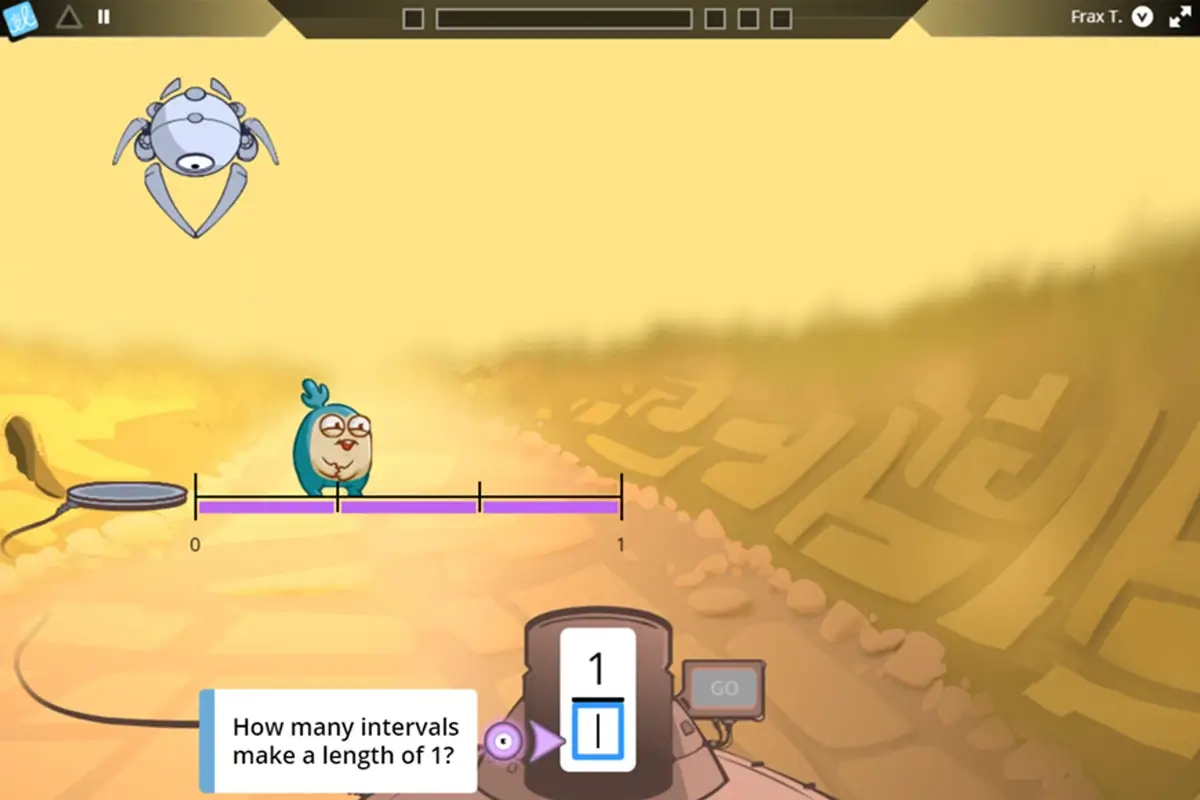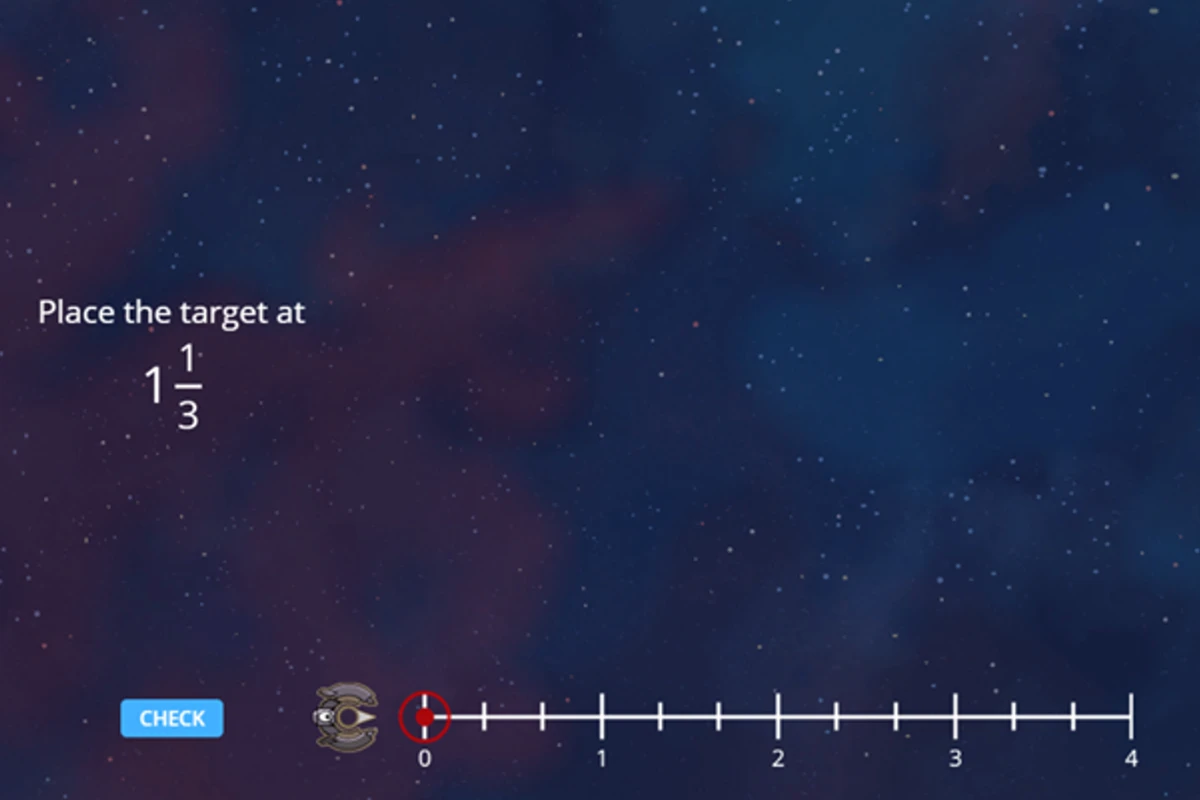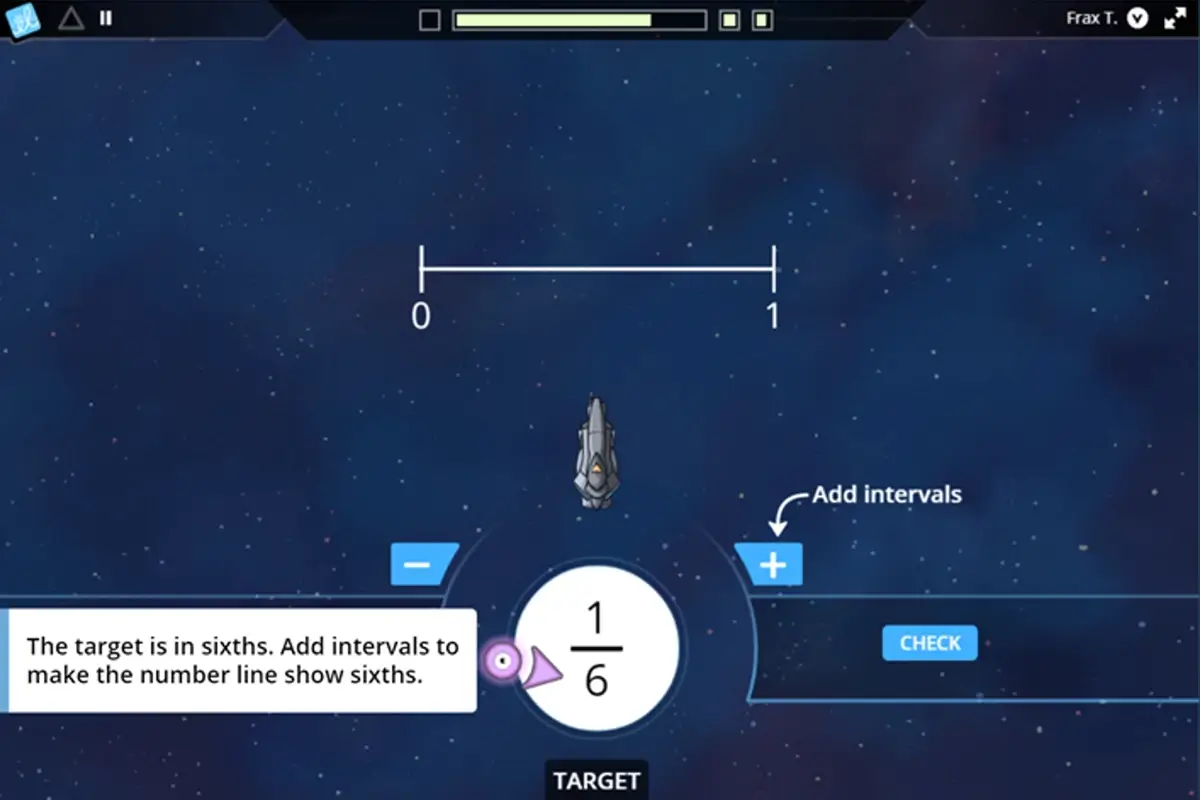5 Things to Know About Plotting Fractions on a Number Line

A conceptual understanding of fractions is vital. Without a firm grasp of fractions in elementary school, students struggle significantly in algebra and advanced math.
How are number lines related to fractions and effective instruction? What does “plotting fractions” actually mean, and is it recommended in elementary school? Read on to find out!
What are fractions on a number line?
Fractions are numbers, each with magnitude (size) and a location on the number line. Research shows that the strongest learning occurs when students develop an understanding of fractions using visual models like length models and number lines.
Once students understand how a numerator and denominator work together to create a single value (length), they will be able to locate and find specific fractions on the number line in relation to other numbers. With a strong fraction number sense, students can then apply their knowledge to advanced work with fractions, such as comparing fractions, decomposing fractions, and fractions arithmetic.
What does it mean to plot fractions on a number line?
Teachers might hear the term “plotting fractions” when it comes to working with number lines—it might even be a required vocabulary term in their curriculum! However, asking a classroom to “plot fractions” can be confusing and misleading for elementary students who are new to fractions.
When educators reference plotting fractions on number lines, they are likely referring to representing a fraction on the number line in relation to other numbers.
5 things to know about plotting fractions on a number line
At ExploreLearning, we are passionate about helping teachers with classroom strategies and solutions that empower instruction and teaching autonomy. Our team of developers is well-versed in the realities of elementary math instruction. Many have years of classroom experience and advanced math expertise that drive the research-based design and instruction found in our STEM tools.
The team behind ExploreLearning Frax particularly understands the common challenges of teaching fractions. Frax is an adaptive, game-based program that makes fractions finally make sense. Using Frax, students develop a conceptual understanding of fractions using the latest evidence-based research.
1. Plotting fractions: What it really means
In the elementary years, most references to plotting fractions are likely related to placing or positioning fractions on the number line. However, most tasks related to plotting numbers often appear in later grade levels during more advanced mathematics, such as plotting numbers on a graph (with an x-axis and y-axis) or plotting a sequence of numbers (such as pi, a decimal, and a fraction).
2. Why plotting fractions can be challenging for young learners
Without an understanding of a fraction’s size or an awareness of number line intervals, students will struggle to plot fractions on a number line. For example, if a student does not conceptually grasp that 11/8 is larger than 8/8, they will not be able to complete any plotting-related task.
3. Alternatives to traditional plotting: Locating fractions instead
A more intuitive solution exists! Teachers can adjust their fraction vocabulary and ask students to locate, find, or represent a fraction on a number line instead.
To do this, students must understand how intervals make up a number line. Students must learn to count the number of intervals between 0 and 1 and associate that number with the denominator. Then, they count the number of intervals between 0 and a particular point and associate that number with the numerator.
Once students have built a foundational understanding of fractions, they will be able to place fractions on the number line according to their specific magnitude (size).
4. The importance of visual models and number lines
As modeling tasks become more complex, research shows that fractions are easier to understand when presented with lines instead of circles (length models vs. circular area models). However, students cannot immediately jump into number lines and be expected to succeed.
5. How Frax supports fraction understanding without plotting
Built around evidence-based practices, Frax uses visual representations like length models to introduce fractions on a number line through carefully scaffolded tasks. Frax gradually incorporates number lines through a variety of fun, game-based interactions that focus on the meaning and comprehensibility of the representation, ensuring students understand intervals and fraction magnitude before they locate and place fractions on a number line.
Frax is a zero-entry program that allows all students to develop foundational skills while receiving in-the-moment feedback tailored to their level of understanding. From day one, Frax introduces length models before students progress to number lines.
For example, in the Market Day Frax game, students fill orders for hungry alien customers while constructing block models. Based on each alien's order, students must provide the numeric form of each fraction, which allows them to strengthen their conceptual understanding of fractions before encountering the number line representation.
“The transition from area models to a number line used to be very confusing for students. This year, it made so much more sense to them. They were using terms like ‘intervals’ which I know they got from using Frax. I had been concerned about starting Frax before we officially began the fractions unit, but now I see how much the students are benefiting from being exposed to these concepts before the start of the unit. I have a wide variety of math learners in my class and to see them all feeling successful and engaged by the same tool is a wonderful feeling.”
-Grade 3 teacher, New York
Once students are ready, Frax gradually introduces the number line through scaffolded practice activities. When appropriate, Frax asks students to place or locate fractions on a number line rather than plotting them.
Students work to understand intervals for fractions greater than 1.

Students locate and place fractions on the number line.

Students create their own number lines

…and more!
Frax: A better method for teaching fractions on a number line
Frax’s individualized instruction helps all students reach grade-level proficiency, empowering teachers to propel learning forward while student learning and engagement are maximized with math practice that feels like fun.
“Many of my students can already name fractions, place them on number lines, and compare fractions, even though these things have never been addressed in whole group lessons yet. I love how engaging Frax is, and how well it sequences the learning of fractions and makes it relatable. My students love Frax. It is the most popular program in my classroom, and I see the way it helps benefit them in our math lessons! It does a great job of conveying difficult concepts, especially comparing fractions and putting them on the number line.”
-Grade 3 teacher, Connecticut
